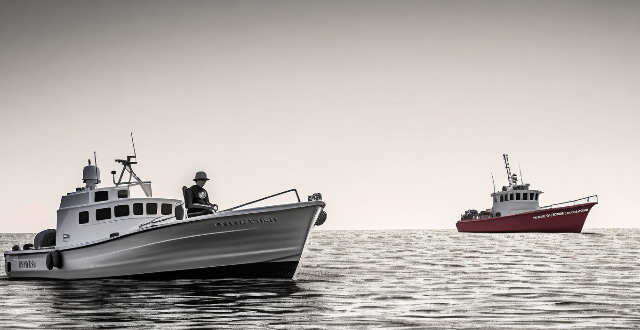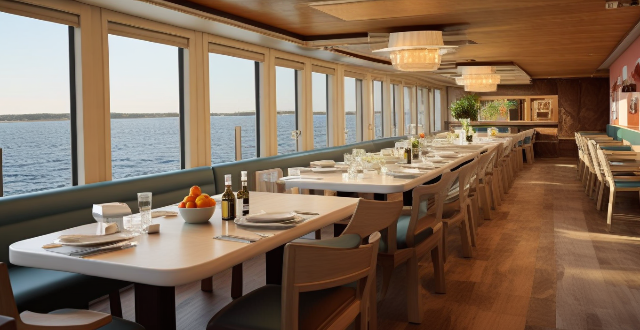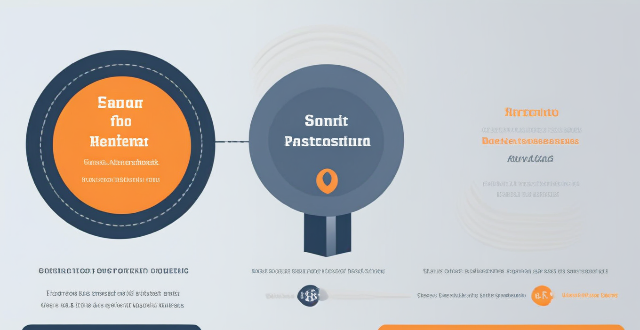Place Ship

Can I bring my pet on a cruise ship ?
Cruise ships offer a unique and exciting way to travel, but many pet owners wonder if they can bring their furry friends along for the adventure. The answer to this question depends on several factors, including the cruise line, the type of pet, and the specific policies of the ship. In this article, we will explore these factors in detail and provide you with all the information you need to know before deciding whether to bring your pet on a cruise ship.

What are the most common forms of entertainment on a cruise ship ?
Cruise ships are known for providing a wide range of entertainment options to cater to the diverse preferences of their passengers. Here are some of the most common forms of entertainment on a cruise ship: Live Performances, Nightclubs and Lounges, Casinos, Cinemas, Spas and Wellness Centers, Recreational Activities, Children's Programs, Enrichment Programs, Shopping and Boutiques, Dining and Specialty Restaurants.

What safety measures are in place on cruise ships ?
Cruise ships implement various safety measures to ensure the well-being of passengers and crew, including muster drills, life-saving equipment, fire safety systems, medical facilities, security personnel, emergency response plans, navigation systems, and regular maintenance checks.

Are there any restrictions on what I can buy and ship to my country ?
**Restrictions on International Purchases and Shipping:** When buying and shipping items internationally, restrictions vary by country to ensure safety, prevent disease spread, and maintain economic balance. Restricted items often include agricultural products, animal products, cultural artifacts, dangerous goods, electronic devices, medication, military items, and products from protected species. Additionally, many items face customs duties and taxes. It is crucial to research specific regulations before making an international purchase to avoid legal issues and contribute to broader goals like public safety and cultural preservation.

What is the protocol for tipping staff on a cruise ship ?
Tipping protocol on cruise ships includes understanding who to tip, how much to give, and when to do so. Key points include: 1. **Who to Tip**: Stateroom attendants, waitstaff, bar staff, and other service personnel like activities staff and tour guides. 2. **How Much to Tip**: Standard daily gratuity is often automatically added to your bill ($12-15 per person per day), but additional cash tips are encouraged for exceptional service. 3. **When to Tip**: Typically at the end of the cruise when settling your account, or periodically throughout longer voyages. 4. **Cash or Credit Card**: Cash is preferred as it benefits crew members directly; however, some lines allow adding tips to credit card bills. 5. **Alternatives to Cash Tipping**: Prepaid gratuities or gratuity gift cards for those who prefer not to carry cash. Some all-inclusive cruises include gratuities in their price. By following these guidelines, passengers can ensure they are rewarding hardworking crew members appropriately while maintaining proper etiquette.

How will interstellar exploration impact our understanding of the universe and our place within it ?
Interstellar exploration is a quest to understand the universe and our place in it. It has the potential to revolutionize scientific knowledge by unraveling cosmic origins, understanding planetary systems, and advancing physics. It can also impact human perspective by realizing our place in the cosmos, cultural and philosophical implications, and ethical considerations. Interstellar exploration stands at the threshold of transforming our knowledge and perceptions, pushing the boundaries of science, and reshaping humanity's self-image.

What kind of food can I expect on a cruise ?
Cruise ships offer a diverse array of food options to suit any palate or dietary restriction. The main dining room is the primary restaurant on the ship where passengers can enjoy formal meals with a fixed schedule, while the buffet restaurant offers a more casual dining experience with a variety of food stations. Specialty restaurants provide unique dining experiences for an additional fee, and room service is available 24 hours a day for those who prefer to dine in the comfort of their stateroom. Cafés and quick bite locations are also available for lighter fare or snacks throughout the day.

How does a river cruise compare to an ocean cruise ?
River cruising and ocean cruising offer distinct experiences for travelers seeking different kinds of adventures. While both involve traveling on water, the environments, destinations, and activities vary significantly. Here's a detailed comparison: - **Destinations and Itineraries**: River Cruises focus on specific rivers like the Danube or Rhine, offering intimate views of local landscapes and cultures. Ocean Cruises cover vast distances across seas and oceans, visiting multiple countries and ports. - **Ship Size and Capacity**: River Cruises are typically on smaller ships with fewer passengers, creating a more intimate atmosphere. Ocean Cruises operate on larger ships with thousands of passengers and extensive amenities. - **Activities and Entertainment**: River Cruises emphasize cultural immersion and shore excursions. Ocean Cruises provide a wide variety of entertainment onboard, from Broadway-style shows to poolside activities. - **Duration and Pace**: River Cruises tend to be shorter in duration, usually ranging from a few days to a week or two. Ocean Cruises can last anywhere from a few days to several months. - **Cuisine and Dining**: River Cruises often highlight regional specialties and local dishes. Ocean Cruises feature diverse culinary options, from buffets to gourmet restaurants. - **Cost and Value**: River Cruises can be seen as more boutique and exclusive, often coming with a higher price tag due to their personalized service. Ocean Cruises offer a wide range of pricing, from budget-friendly to ultra-luxury.

How accessible are modern cruise ships for people with disabilities ?
Modern cruise ships offer improved accessibility for people with disabilities through physical accommodations, service provisions, and recreational options.

What are some common challenges faced by women in the workplace, and how can they be addressed ?
The article discusses common challenges faced by women in the workplace, including gender bias, work-life balance issues, harassment and discrimination, and lack of mentorship and networking opportunities. Solutions to these challenges are also provided, such as addressing gender bias through pay equity analyses and blind hiring processes, promoting work-life balance with flexible work arrangements and parental leave policies, creating a safe and respectful workplace through clear policies and training on harassment prevention, and providing mentorship and networking opportunities through mentorship programs and leadership development programs. The article concludes that addressing these challenges requires a concerted effort from both individuals and organizations to create a more equitable and supportive environment for women in the workforce.

What are the potential consequences of not having adequate biosafety policies in place ?
Biosafety policies are crucial for handling and containing biological materials safely. Inadequate biosafety measures can lead to direct and indirect exposure to pathogens, spread of disease, environmental contamination, legal and ethical issues, and economic impacts. It is vital for institutions and researchers to prioritize biosafety measures to protect human health, the environment, and society.

How do I choose the right cruise itinerary for my vacation ?
Choosing the right cruise itinerary is essential for a memorable and enjoyable vacation. Here are some tips to help you make the best choice: - Determine your destinations by considering climate, activities, and duration. - Select a cruise line that offers itineraries to your desired destinations and has a good reputation, ship size, and onboard amenities. - Consider onboard amenities such as dining options, entertainment, recreation, and kid-friendly facilities. - Set your budget by considering the base fare, taxes and fees, onboard expenses, and pre- and post-cruise accommodations. - Decide whether to book early or wait for last-minute deals based on your preferences and flexibility with travel dates and destinations.

How does the method of loci (memory palace) work scientifically ?
The method of loci, or memory palace technique, is a mnemonic device that enhances memory recall by associating information with specific locations in a familiar place. The scientific explanation behind its effectiveness involves visualization, spatial navigation, and association processes in the brain, particularly engaging the prefrontal cortex and hippocampus. Benefits include improved memory recall, enhanced learning, increased focus, and reduced anxiety. To use this method, one should choose a familiar place, create mental images, assign locations, perform mental walkthroughs, and regularly review and refine the process.

How can I protect my home from wildfires ?
Wildfires can cause significant damage to homes and properties, but there are steps you can take to protect your home. Create a defensible space by removing dead vegetation, trimming trees and shrubs, creating a firebreak, mowing grass regularly, and removing combustible materials. Use fire-resistant materials such as Class A roofing materials, stucco siding, dual-pane windows with tempered glass, and solid core doors made of metal or fiberglass. Maintain your home by cleaning gutters, inspecting roofs and chimneys, checking electrical wiring, and maintaining heating systems. Have an evacuation plan in place by identifying escape routes, having a meeting place, packing emergency kits, and practicing evacuation drills.

Can you suggest any travel destinations that are great for solo travelers ?
Solo travel can be an enriching experience, allowing for self-discovery and independence. Here are some destinations that are great for solo travelers: Japan is a safe and welcoming country for solo travelers, with a well-developed public transportation system. Tokyo offers a mix of ancient traditions and modern technology, while Kyoto is known for its beautiful temples and gardens. Hiroshima is a city with a rich history to explore. New Zealand is another fantastic destination for solo travelers, with plenty of opportunities for outdoor adventures such as hiking, skiing, and surfing. Queenstown is often called the "Adventure Capital of the World," offering activities like bungee jumping and skydiving. Abel Tasman National Park is a stunning coastal park to hike or kayak through, while the Bay of Islands offers beautiful beaches and sailing opportunities. Thailand is a popular destination for solo travelers thanks to its friendly locals, delicious food, and beautiful beaches. Bangkok is a bustling city with famous temples like Wat Phra Kaew and Wat Arun. Chiang Mai offers an exploration of the ancient city and surrounding countryside, including hill tribes and elephant sanctuaries. Koh Samui is a laid-back island to enjoy the island life. Iceland is a unique destination that offers dramatic landscapes, hot springs, and northern lights viewing opportunities. Reykjavik is a colorful capital city filled with museums and art galleries. The Golden Circle route takes you to iconic landmarks like Geysir geothermal area, Gullfoss waterfall, and Thingvellir National Park. The Blue Lagoon is a famous geothermal spa to relax in. Norway is another breathtaking destination that offers stunning fjords, mountains, and northern lights displays. Oslo is a vibrant capital city with museums like the Viking Ship Museum and Munch Museum. Bergen is a charming city surrounded by fjords, accessible by a scenic train ride through the mountains. The Lofoten Islands offer picturesque scenery and fishing villages to explore by hiking or kayaking.

Is it safe to donate used electronics for recycling purposes ?
Is it Safe to Donate Used Electronics for Recycling Purposes? Introduction: Donating used electronics for recycling purposes is a common practice that has both environmental and social benefits. However, many people are concerned about the safety of donating their old electronic devices. In this article, we will explore whether it is safe to donate used electronics for recycling purposes. Safety Concerns: When donating used electronics, there are several safety concerns that need to be addressed: 1. Data Security: Old electronic devices may contain sensitive personal information, such as photos, documents, and login credentials. Donating these devices without properly erasing the data can lead to identity theft and other security breaches. 2. Environmental Impact: Improper disposal of electronic waste can harm the environment. Toxic chemicals in electronic devices can contaminate soil and water sources if not disposed of correctly. 3. Physical Safety: Some electronic devices may contain hazardous materials, such as batteries or capacitors, that can cause injury if not handled properly. Benefits of Donating Used Electronics: Despite these concerns, there are several benefits to donating used electronics for recycling purposes: 1. Reduced Landfill Waste: By donating used electronics for recycling, you reduce the amount of waste that ends up in landfills. This helps conserve natural resources and protect the environment. 2. Resource Conservation: Recycling electronic devices conserves valuable resources, such as metals and plastics, that can be reused in new products. 3. Support for Charitable Causes: Many organizations accept donated electronics to support charitable causes, such as providing technology access to underprivileged communities or funding research initiatives. Best Practices for Safe Donation: To ensure the safety of donating used electronics for recycling purposes, follow these best practices: 1. Wipe Your Data: Before donating your device, make sure to wipe all personal data from it. Use a data erasure software or perform a factory reset on the device. 2. Choose a Trusted Recycler: Research recycling centers or organizations before donating your device. Look for reputable organizations that have experience in handling electronic waste safely. 3. Properly Pack and Ship Your Device: If you are shipping your device, make sure to pack it securely to prevent damage during transit. Use bubble wrap or packing peanuts to cushion the device and place it in a sturdy box. 4. Label Your Device: Clearly label your device with any relevant information, such as its condition or any known issues. This helps the recycler assess the device accurately and determine the appropriate recycling method. Conclusion: In conclusion, donating used electronics for recycling purposes can be safe when done correctly. By following best practices for data security, environmental impact, and physical safety, you can contribute to reducing electronic waste while supporting charitable causes. Always choose a trusted recycler and take necessary precautions when preparing your device for donation.

How can I meet other travelers while backpacking ?
Backpacking is an incredible way to explore the world and experience different cultures. However, it can sometimes get lonely on the road. Here's how you can meet other travelers and make your journey more enjoyable: - **Stay in Hostels:** Hostels are a great place to meet fellow backpackers. They usually have communal areas where people gather to socialize. Some hostels also organize events like pub crawls or city tours which are perfect opportunities to meet new people. - **Join Tour Groups:** Signing up for a tour group is another excellent way to connect with other travelers. You'll share experiences and create bonds over common interests. Opting for adventure activities like hiking or diving will likely put you with like-minded individuals. - **Use Social Media and Apps:** The digital age has made it easier than ever to connect with people who share your passion for travel. Websites like Lonely Planet have forums where you can find travel companions or get advice. Apps such as Backpackr and Travello allow you to find travelers going to the same place as you and plan to meet up. - **Take Part in Local Activities:** Engaging in local activities is not only a great way to immerse yourself in the culture but also to meet other travelers interested in the same experiences. Learning a skill like cooking or dancing is a fun way to meet people. Volunteering for local projects can introduce you to a network of travelers and locals alike. - **Attend Local Festivals:** Local festivals draw crowds, including other travelers looking to experience the event. This setting is ideal for meeting new people. Music festivals often attract a young, international crowd. Participating in traditional festivals offers a deeper understanding of the culture and chances to meet travelers. - **Hang Out at Popular Landmarks:** Popular tourist spots are natural magnets for travelers. Spending time at these locations increases your chances of meeting others. Places like the Eiffel Tower or the Great Wall of China are bound to have other tourists. Head to popular viewpoints or scenic spots; they often attract photographers and adventurers. - **Eat at Local Restaurants:** Dining at local eateries during peak meal times increases your likelihood of encountering other travelers. Many backpackers look for a good breakfast place; you can start your day with new friends. Places that offer good value for money tend to attract backpackers. - **Learn the Local Language:** Having some knowledge of the local language can help you connect with both locals and other travelers trying to learn it. Look for language exchange meetups where you can teach English in exchange for learning the local language. Attending a language course is another way to meet people with similar interests.

What international agreements are in place to combat greenhouse gas emissions ?
The text provides an overview of several international agreements aimed at combating greenhouse gas emissions, including the Paris Agreement, Kyoto Protocol, and United Nations Framework Convention on Climate Change (UNFCCC). The Paris Agreement, adopted by 197 countries in 2015, sets targets for reducing emissions and adapting to climate change impacts. The Kyoto Protocol, effective from 2005, introduced binding emissions reduction targets for developed countries. The UNFCCC, a treaty from 1992, established principles and mechanisms to address climate change. Additionally, there are regional and sectoral agreements targeting specific industries or regions.

How do extreme weather events due to climate change impact international trade and logistics ?
Extreme weather events, often exacerbated by climate change, have a profound impact on international trade and logistics. These events can disrupt supply chains, increase transportation costs, and lead to shortages of goods and services. The various ways in which extreme weather events affect international trade and logistics include disruption of supply chains through transportation disruptions and production disruptions, increased transportation costs due to higher fuel prices and insurance costs, and shortages of goods and services due to reduced availability and price volatility. To mitigate these impacts, it is essential for governments, businesses, and individuals to take action to address climate change and adapt to its effects on international trade and logistics.